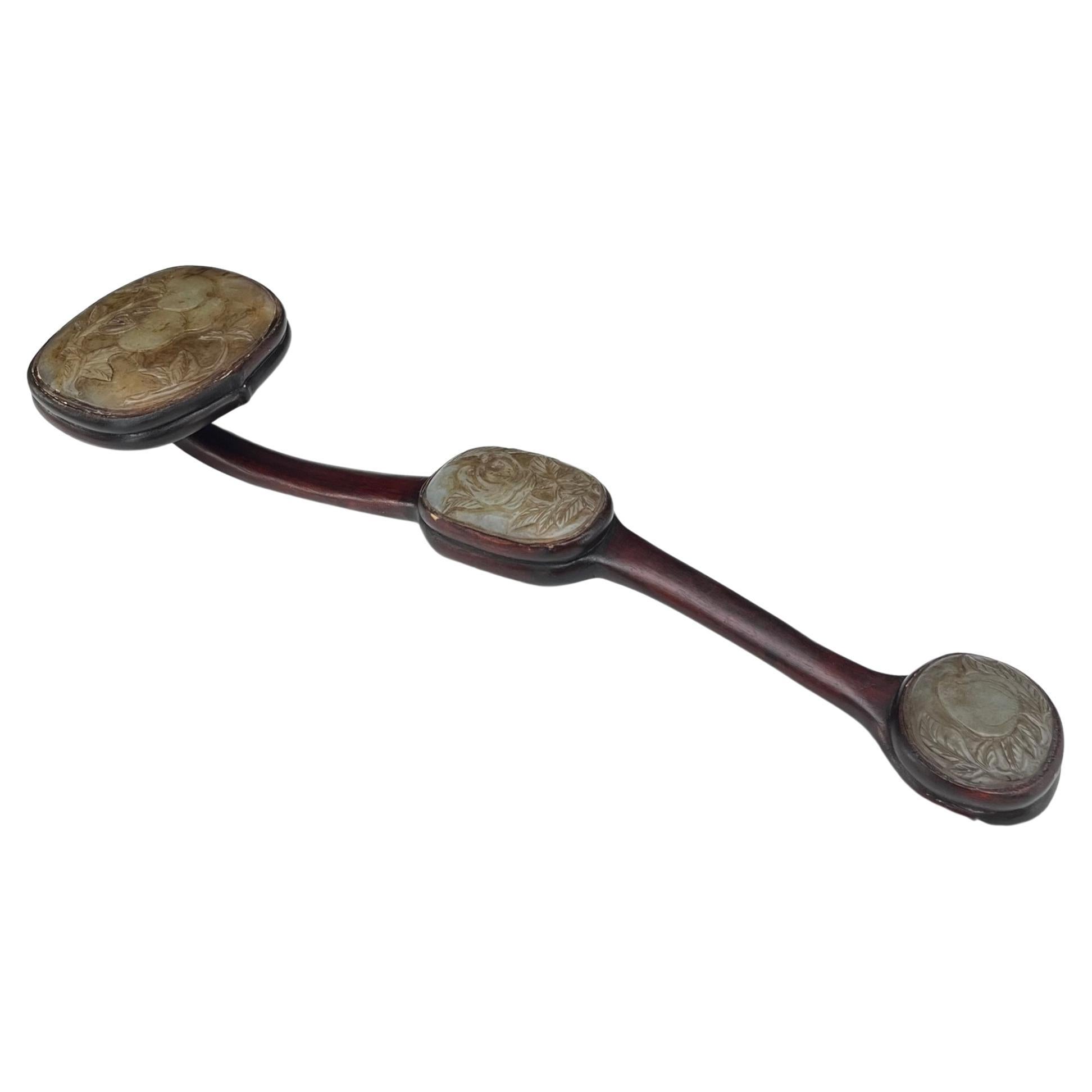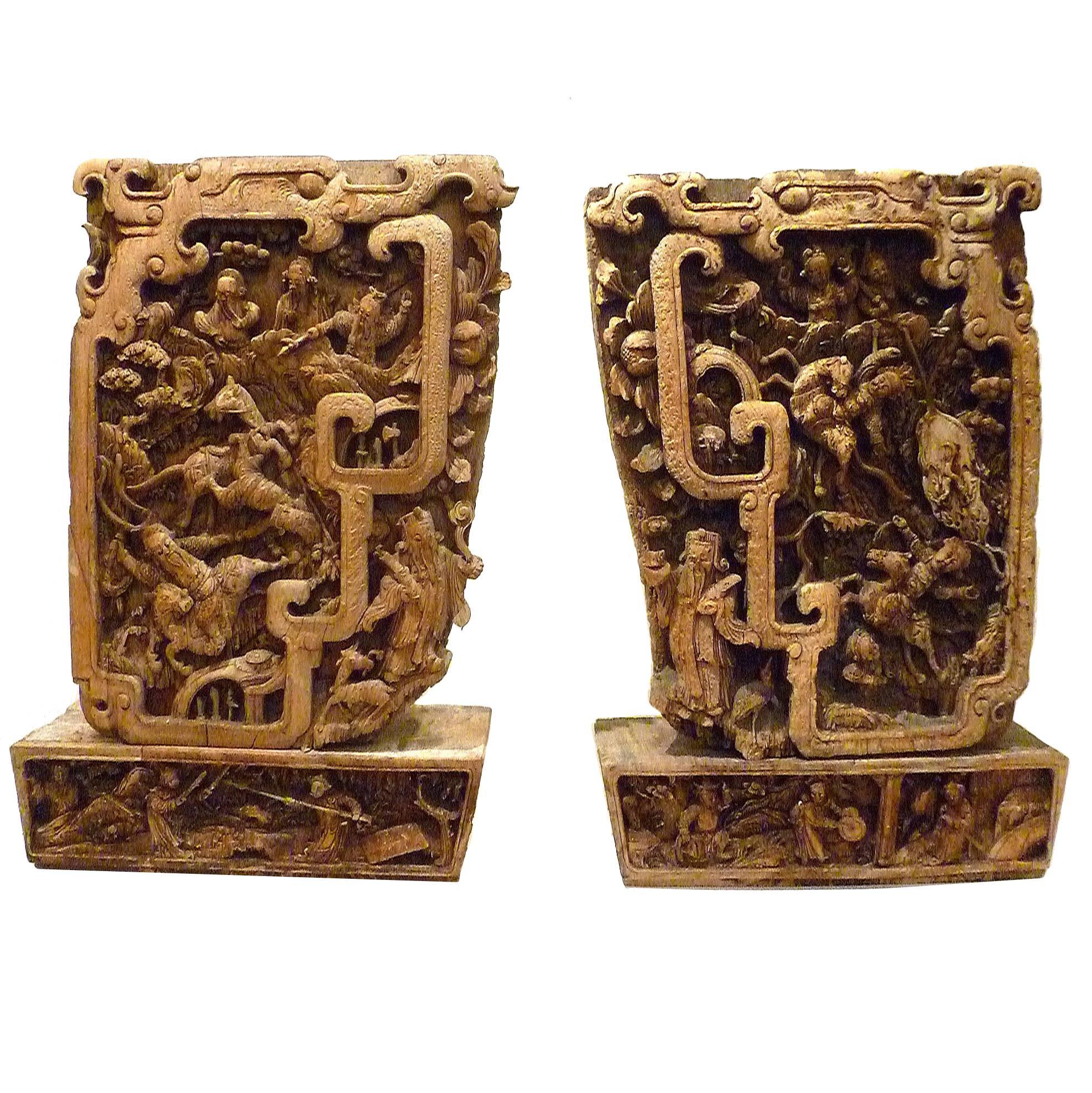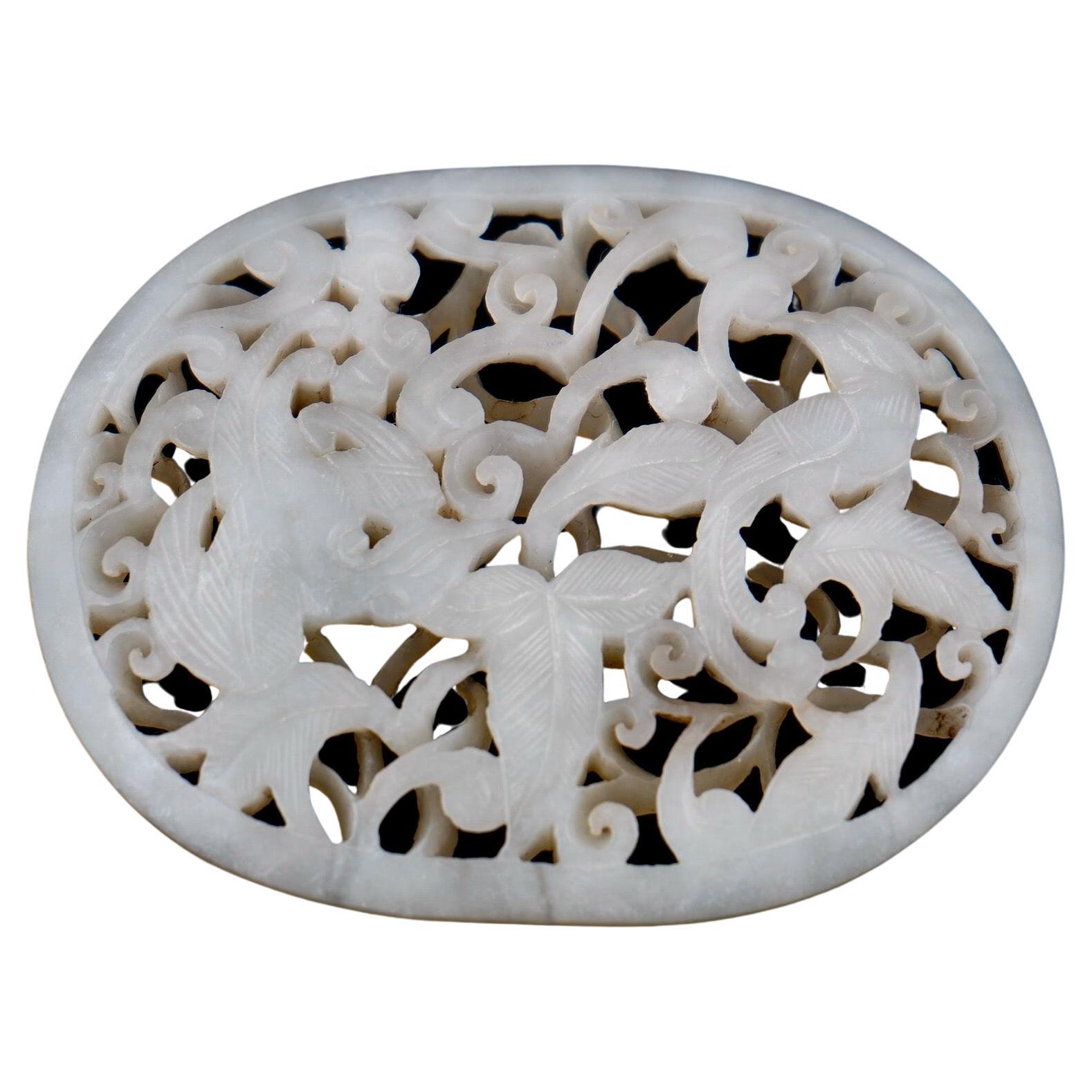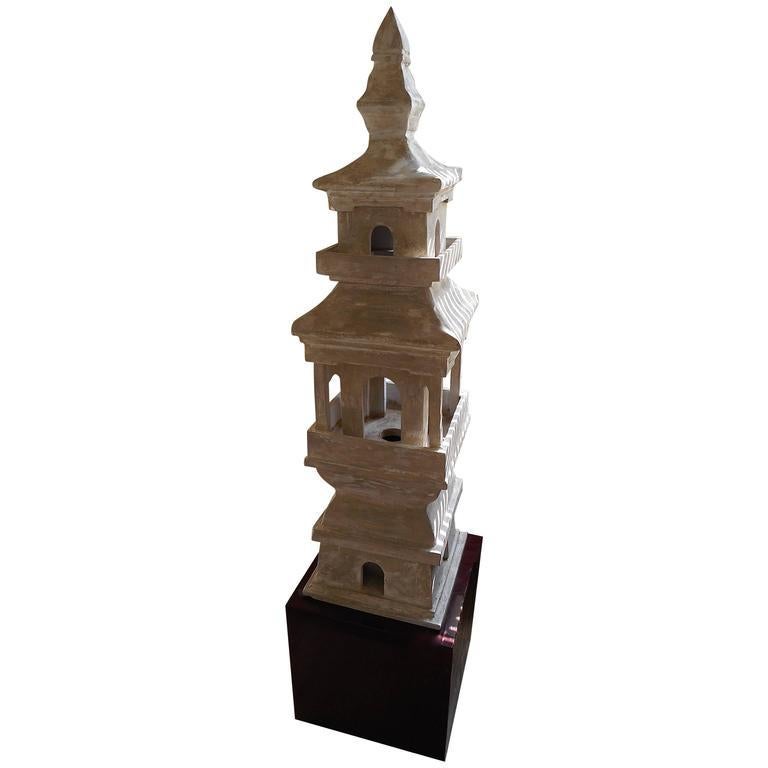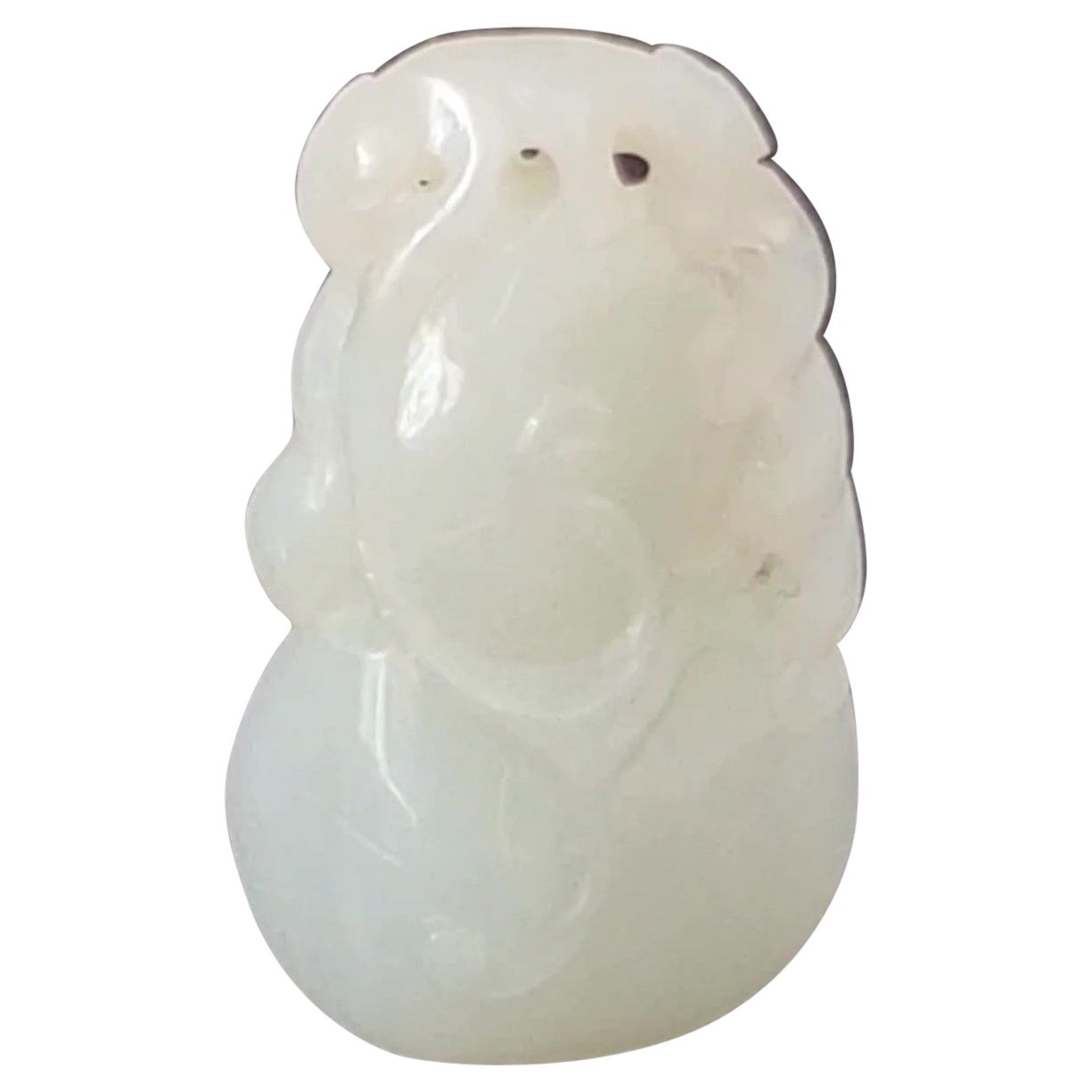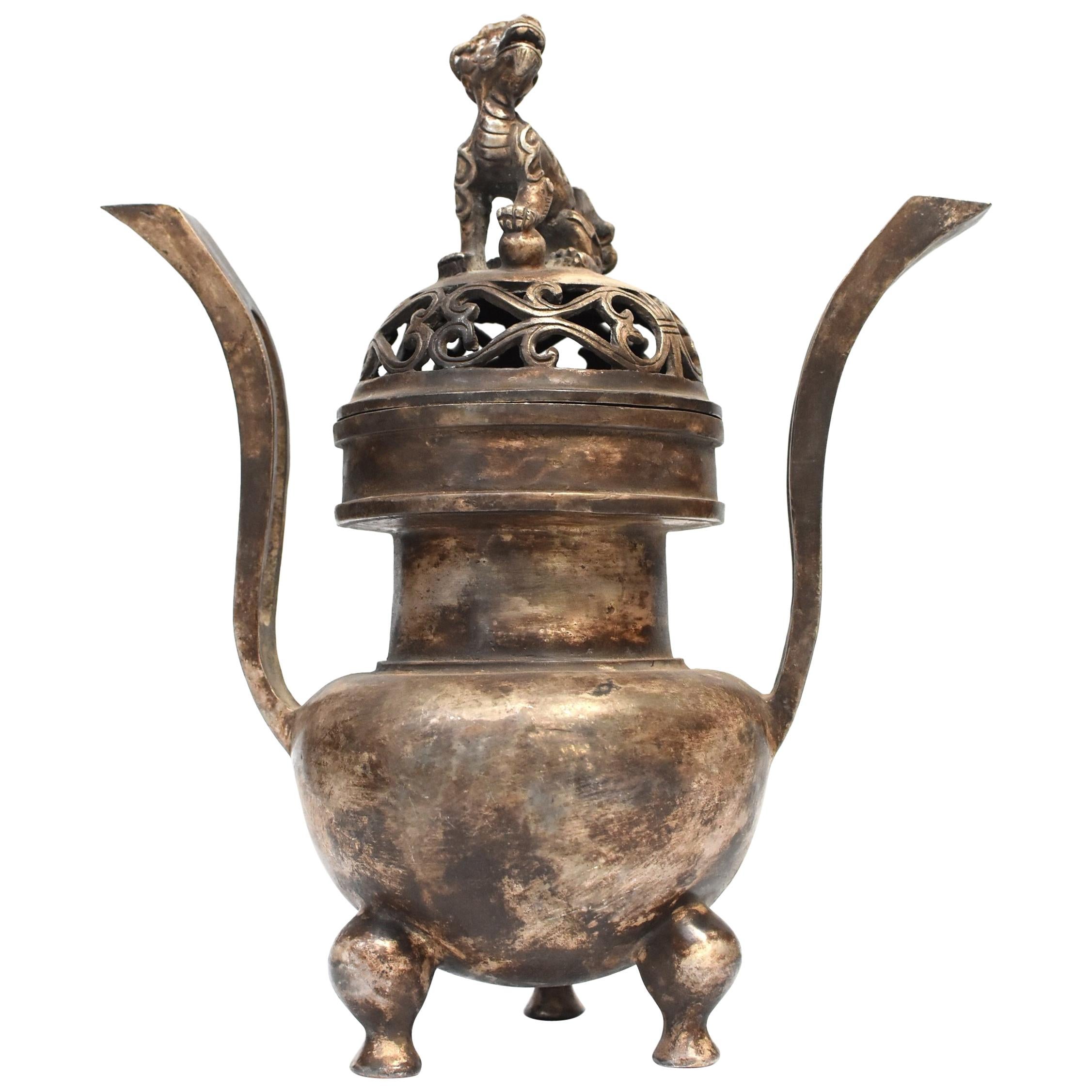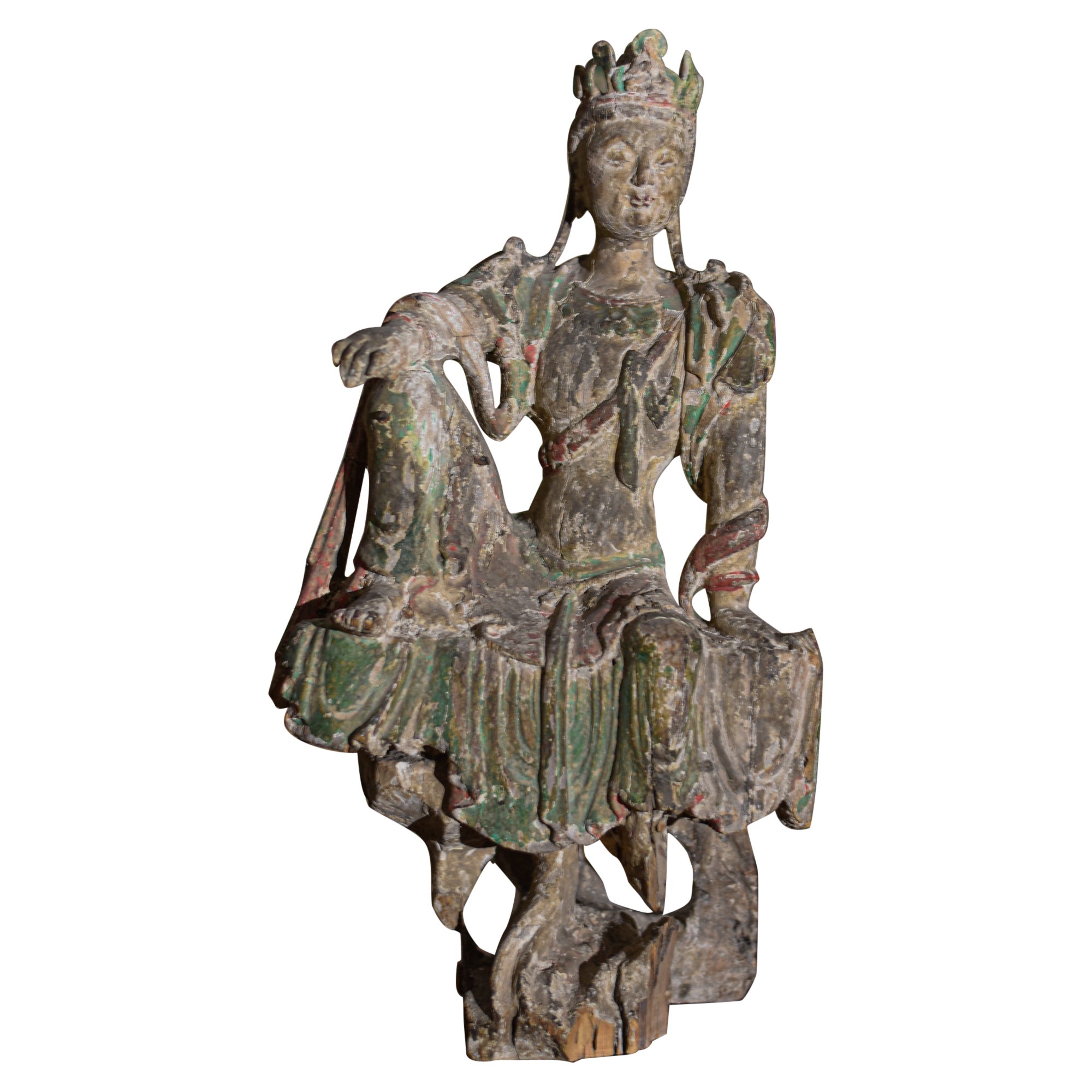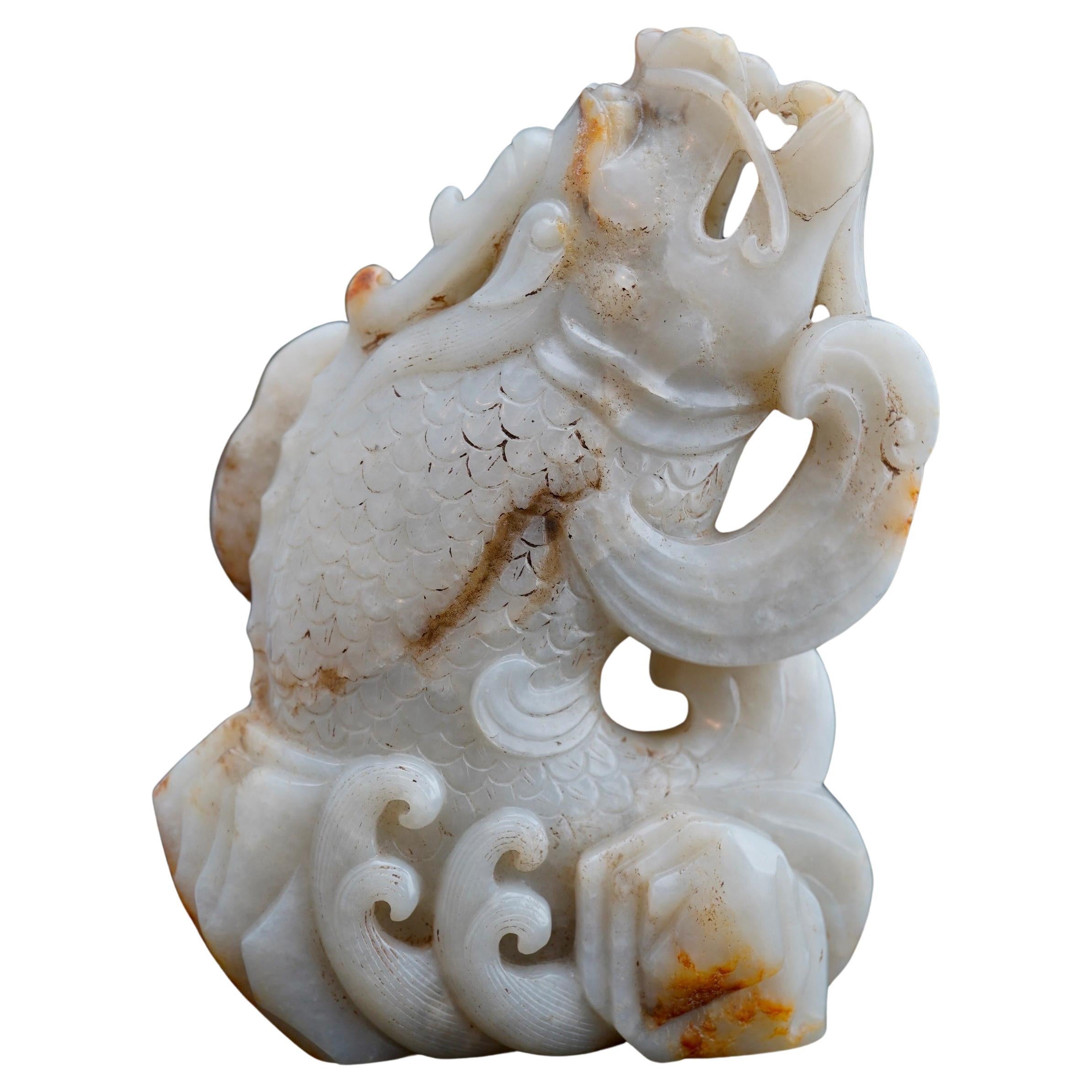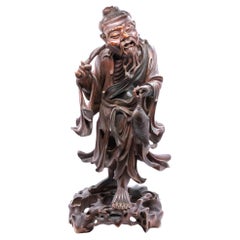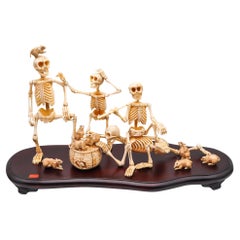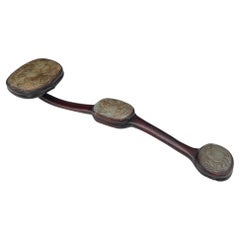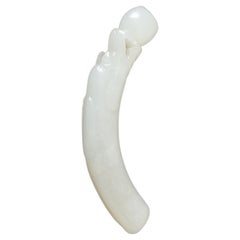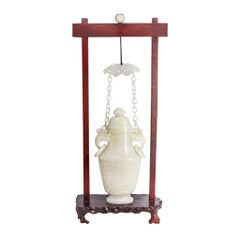
China Qing Dynasty 1890 Amphora Jar with Chains in White Jadeite Jade with Wood
View Similar Items
Want more images or videos?
Request additional images or videos from the seller
1 of 11
China Qing Dynasty 1890 Amphora Jar with Chains in White Jadeite Jade with Wood
About the Item
- Dimensions:Height: 17.2 in (43.69 cm)Width: 4.75 in (12.07 cm)Depth: 4.15 in (10.55 cm)
- Sold As:Set of 3
- Style:Qing (Of the Period)
- Materials and Techniques:
- Place of Origin:
- Period:
- Date of Manufacture:1890
- Condition:Wear consistent with age and use. It is in perfect condition with no broken parts or previous repairs. Presented in a custom made rose wood stand with the original carved sphere on top.
- Seller Location:Miami, FL
- Reference Number:Seller: D0000MENA/.11111stDibs: LU8303233495642
About the Seller
5.0
Platinum Seller
These expertly vetted sellers are 1stDibs' most experienced sellers and are rated highest by our customers.
1stDibs seller since 2023
63 sales on 1stDibs
More From This SellerView All
- Japan 1890 Meiji Period Ebisu Sculpture in Wood Carving of an Old FishermanLocated in Miami, FLAn extremely well detailed wood carving of Ebisu, as a fisherman. Beautiful and well detailed sculpture, created in Japan during the Meiji dynastic period (1868-1912) back in the 1890's. This piece represent the god of good fortune Ebisu. Was exceptionally carved and executed from one solid single piece of rose wood, showing a gorgeous face expression, with intricate details in the hands and feets, he's carrying as usual a rod and a fish. Ebisu (yebisu), ???, god of fortune, the ocean and fisherman. In the japanese mythology is one of the seven gods of luck, sichi-fuku-jin, the patron of the fisherman and tradesmen. he is depicted as a bearded, smiling fisherman with formal long court ropes, often carrying a rod in one hand and a tai, symbolic fish of the good luck, in the other. The height is 14.25 inches (36.20 cm) and the base measurements is 6.5 by 6.45 inches (16.5 x 16.38 cm). Meiji period, is an era of Japanese history that extended from October 23, 1868 to July 30, 1912.The Meiji era was the first half of the Empire of Japan, when the Japanese people moved from being an isolated feudal society at risk of colonization by Western powers to the new paradigm of a modern, industrialized nation state and emergent great power, influenced by Western scientific, technological, philosophical, political, legal, and aesthetic ideas. As a result of such wholesale adoption of radically different ideas, the changes to Japan were profound, and affected its social structure, internal politics, economy, military, and foreign...Category
Antique 1890s Japanese Meiji Sculptures and Carvings
MaterialsWood
- Chinese 1900 Qing Dynasty Bodhisattva Altar Temple-Pagoda In Wood And CarvingsLocated in Miami, FLBuddhist altar temple-pagoda from the Qing Dynasty (1644-1911). Fabulous and very rare, East Asian, Buddhist Altar Temple-Pagoda. It was created in China during the late Qing Dynast...Category
Antique 1890s Chinese Qing Sculptures and Carvings
MaterialsWood, Ivory
- Japan 1890 Meiji Period Signed Assembling of Okimono with a Group of SkeletonsLocated in Miami, FLA signed Okimono from the Japanese Meiji period (1868-1912). Very rare, unusual and large sculptural assembling of a dysplaying piece of okimono. Created in Japan during the imperial period of the Meiji (1868-1912). This extraordinary piece okimono sculpture depict a group of four intricately and realistically rendered carousing males skeletons representations (Gaikotsu) standing in several position. One skeleton is crouched down playing with mouses in the floor. The second is seated resting in the other's back, peacefully smoking opium. The others two are fully standing in interacting position. The entire composition is arranged freely displayed on the wood base including a woven basket, apparently with food and four playfull mouses. There are an extra five mouses in different positions, freely playing around, all of them with the eyes accented with carved black ebony. The composition is displayed on a four-legged free form carved wood platform with an inlaid red plaque engraved with the artist's signature. The level of detail and the quality of the carving is truly exceptional. Has an exact measurements of 216.15 mm by 139.7 mm by 359.41 mm (8.51 x 5.5 x 14.15 Inches). After an extensive collection of data, comparables and references to this piece, we have only been able to find only three okimono sculptures like this, with similar themes and the same quality of work. References Note: A similar carving of four skeletons playing an animated game of dominos, signed Shutaro in an inlaid rectangular red plaque, was sold in London by Christie’s South Kensington in October 14 2014, Lot 120 Sale 5546. References Note: A similar carving with four skeletons in an otherwise typical victorian scene of a photographer and three sitters signed Shutaro in an inlaid rectangular red plaque, was sold in Edinburgh at Lyon & Turnbull in November 7, 2018. References Note: A similar carving with five skeletons seated, playing cards and drinking, was sold in London by John Nicholson Fine Art on September 26, 2018. Meiji period, is an era of Japanese history that extended from October 23, 1868 to July 30, 1912.The Meiji era was the first half of the Empire of Japan, when the Japanese people moved from being an isolated feudal society at risk of colonization by Western powers to the new paradigm of a modern, industrialized nation state and emergent great power, influenced by Western scientific, technological, philosophical, political, legal, and aesthetic ideas. As a result of such wholesale adoption of radically different ideas, the changes to Japan were profound, and affected its social structure, internal politics, economy, military, and foreign relations. The period corresponded to the reign of Emperor Meiji. It was preceded by the Keio era and was succeeded by the Taisho era, upon the accession of Emperor Taisho. Okimono, is a Japanese term meaning for display an ornament; art object; or decorative object, usually displayed in a tokonoma or butsudan "Buddhist altar". It is an ornament or figure, especially one placed in a guest room. An okimono may be a small Japanese carving...Category
Antique 1890s Japanese Meiji Sculptures and Carvings
MaterialsWood
- China 549-577 AD Northern Qi Dynasty Ancient Caparisoned Horse in EarthenwareLocated in Miami, FLExtremely rare Chinese pottery caparisoned horse from the Northern Qi region. A beautiful large sculptural piece, created in China during the Northern Qi dynasty period, between the 549 and 577 AD. This horse statue is extremely finely modeled of earthenware pottery, standing in a very elegant and majestic position striding on a trapezoidal shaped base. The animal has a gracefully arched neck to the left looking forward and its extremely well modeled. The head is adorned with a large detailed tassels of plumes and the body is embellished with a beautiful saddle and intricate harnesses. The trapping around the chest and rump is adorned with elaborated tassels and the straps are accented with multiples florets and bosses in high relief. Decorated with dotted and circles patterns. The surface is treated with applications of natural color pigments such; red, white and others. Has a measurements of 435 mm by 319 mm by 243 mm (17.10 x 12.55 x 9.55 Inches) (43.5 x 31.9 x 24.3 Cm). Northern Qi, was the successor state of the Chinese Xianbei state of Eastern Wei...Category
Antique 15th Century and Earlier Chinese Archaistic Antiquities
MaterialsEarthenware, Clay, Paint
- China 100 BC Han Dynasty Ancient Rare Stickman Sculpture in Earthenware PotteryLocated in Miami, FLStanding Stickman from the Han Dynasty. Original ancient Chinese tomb attendants sculpture of a tall, thin standing man wearing a short tunic. Beautifully crafted in grey earthenw...Category
Antique 15th Century and Earlier Chinese Han Antiquities
MaterialsIron
- China 549-577 AD Northern Qi Dynasty Ancient Caparisoned Horse In EarthenwareLocated in Miami, FLExceedingly rare Chinese pottery caparisoned horse from the Northern Qi region. A beautiful sculptural piece, created in China during the Northern Qi dynasty period, between the 549 and 577 AD. This horse statue is extremely finely modeled of earthenware pottery, standing in a very elegant and majestic position striding on a trapezoidal shaped base. The animal has a gracefully arched neck to the left and its extremely well modeled. The head is adorned with a large detailed tassels of plumes and the body is embellished with a beautiful saddle and intricate harnesses. The trapping around the chest and rump is adorned with elaborated tassels and the straps are accented with multiples florets and bosses in high relief. The surface is treated with applications of natural pigments such; red, white and others. Has a measurements of 394 mm by 343 mm by 257 mm (15.53 x 13.52 x 10.15 Inches) (39.4 x 34.3 x 25.7 Cm). Northern Qi, was the successor state of the Chinese Xianbei state of Eastern Wei...Category
Antique 15th Century and Earlier Chinese Archaistic Sculptures and Carvings
MaterialsEarthenware, Pottery
You May Also Like
- Chinese Russet Jade Hardwood Imperial Ruyi Scepter Qing Dynasty, ProvenanceLocated in Vero Beach, FLChinese Russet Jade hardwood Imperial Ruyi Scepter Qing Dynasty 19th century, Provenance. Large Chinese Qing Dynasty jade Ruyi scepter with three ...Category
Antique 19th Century Chinese Qing Sculptures and Carvings
MaterialsJade
- Pair of Qing Dynasty Architecture Carving PanelsLocated in Greenwich, CTPair of Qing dynasty architecture carving panels, detail carvings with warriors riding horses.Category
Antique 19th Century Chinese Qing Sculptures and Carvings
MaterialsWood
$3,600 / set - White Jade Dragon with Pearl Pendant, Qing DynastyLocated in Nova Scotia, NSThis antique Qing Dynasty nephrite jade pendant consists of a dragon with a pearl in its mouth. There is decorative etching on the body, and the head and mouth are well defined. The pendant has a semi-fine texture with a semi-gloss or slightly waxy luster. This lovely piece of jade is white and has a very slight green tinge in certain lighting. In the Chinese culture, the dragon symbolizes prosperity and good fortune, while the pearl is a symbol of wisdom, spiritual energy, and power. The dragon with a pearl is also a common theme in Chinese imagery and is the subject of myth and legend. This lovely jade pendant was purchased from a private collection along with a magnificent antique Chinese silk...Category
Antique 19th Century Chinese Qing Antiquities
MaterialsStone, Jade
- Chinese White Jade Open Late Qing Dynasty PlaqueBy Alba ChinaLocated in Gainesville, FLChinese white jade openwork plaque late Qing Dynasty depicting birds and flowers. Very fine and detailed work. Small loss on the back side of the pl...Category
Antique 19th Century Chinese Chinese Export Sculptures and Carvings
MaterialsJade
- White Jade Double Gourd Pendant, Qing DynastyLocated in Nova Scotia, NSThis antique nephrite jade double gourd pendant is of the Qing Dynasty and has a fine texture with a glossy luster. It is primarily white with some slight inclusions in the left lower body but in bright light the pendant has a slight green tinge. This lovely jade pendant consists of a smaller gourd on top of a larger one surrounded by vines with smaller hanging gourds. The vines create numerous holes from which to hang the pendant. There are also etchings of stars on the body of the gourds along with tendrils of curling vines. In the Chinese culture, the double gourd is a symbol of fertility and good fortune. Gourds are also associated with Li Tie Guai, one of the eight immortals. This lovely jade pendant was purchased from a private collection along with a magnificent antique Chinese silk...Category
Antique 19th Century Chinese Qing Antiquities
MaterialsStone, Jade
- Qing Dynasty Chinese PagodaLocated in Brussels, BEDynasty Qing period (end of 19th century). Terracotta, coming in five separate pieces. In the style of Tony Duquette.Category
Antique 1880s Chinese Qing More Asian Art, Objects and Furniture
MaterialsTerracotta
Recently Viewed
View AllMore Ways To Browse
Antique Jewelry Art
Items In China
Modern 1890
Signed Carving
White Jade
Used Items In China
Chinese Base Wood
Modern Wood Carving
White China Hand Made
Chinese Wood Sign
Antique China With Lid
Rose Wood Antique Furniture
White Chinese Sculpture
Wood Artifacts
Wood Carved Roses
Wooden Chain
Chinese Sculpture Modern
Carved Wood Chain

